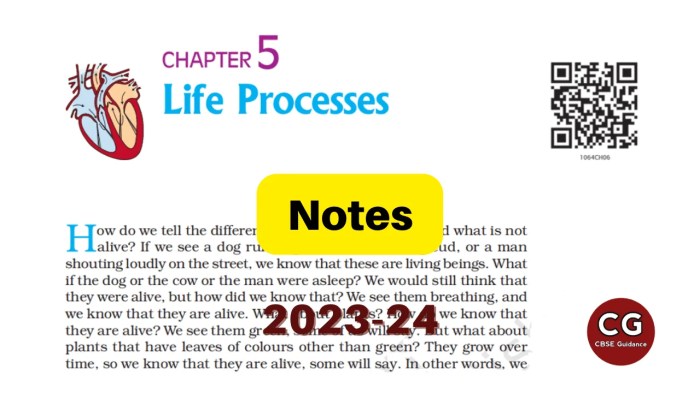6 Fundamentals for Online Marketing Success lays out the key principles for thriving in the online marketplace. This isn’t just about flashy ads; it’s about understanding your audience, crafting compelling content, and building lasting relationships. We’ll dive deep into the crucial elements for a cohesive strategy, from defining success to adapting to changing trends.
From crafting the perfect content strategy to optimizing technical performance, these six pillars are essential for any online business. We’ll explore how they interact and work together to drive real results. This isn’t just theory; it’s practical advice for achieving tangible success in your online marketing efforts.
Defining Online Marketing Success
Online marketing success isn’t just about flashy ads or clever social media posts. It’s a multifaceted approach to achieving specific business objectives within the digital landscape. Success hinges on measurable results, demonstrating a return on investment (ROI) and a clear impact on key business goals. This often involves tracking progress against pre-defined targets, adjusting strategies as needed, and continuously optimizing campaigns.Defining success requires a holistic view, encompassing various aspects of the online experience and its connection to overall business performance.
It’s not simply about generating clicks; it’s about turning those clicks into customers, leads, and ultimately, profits. This requires a strategic understanding of how online marketing efforts contribute to the bigger picture of business growth.
Key Performance Indicators (KPIs) for Online Marketing Success
Online marketing success is demonstrably linked to specific measurable KPIs. These metrics provide a quantitative understanding of campaign effectiveness. Monitoring and analyzing these KPIs is crucial for understanding what’s working and where improvements are needed. Understanding which KPIs are most important depends heavily on the specific business goals and marketing objectives.
- Website traffic: Tracking website traffic, including unique visitors, page views, bounce rate, and time on site, reveals user engagement with the website. This data helps understand user behavior and identify areas for improvement in website design and content.
- Conversion rates: Conversion rates reflect the percentage of website visitors who complete a desired action, such as making a purchase, filling out a form, or signing up for a newsletter. High conversion rates indicate successful lead generation and customer acquisition efforts.
- Customer acquisition cost (CAC): CAC represents the average cost of acquiring a new customer through online marketing efforts. A lower CAC is desirable, indicating greater efficiency and effectiveness in online marketing campaigns.
- Return on investment (ROI): ROI measures the profitability of online marketing campaigns by comparing the revenue generated to the costs associated with the campaign. A positive ROI demonstrates that the marketing efforts are generating a return on investment.
- Customer lifetime value (CLTV): CLTV projects the total revenue a customer is expected to generate throughout their relationship with the business. High CLTV indicates the value of customer retention strategies.
Metrics for Different Online Marketing Channels
Different online marketing channels use various metrics to measure success. Each channel has unique KPIs that reflect its specific function and impact.
| Channel | Key Metrics | Example |
|---|---|---|
| Social Media | Engagement (likes, shares, comments), reach, follower growth, click-through rates (CTRs) on social media ads, website traffic from social media | A campaign on Instagram that increases followers by 15% and drives 10% of website traffic from social media is considered successful. |
| Search Engine Optimization () | Organic website traffic, rankings, domain authority, backlinks, click-through rates (CTRs) on search engine results pages (SERPs) | Improving organic search rankings for target s and experiencing a 20% increase in organic traffic signals successful efforts. |
| Pay-Per-Click (PPC) Advertising | Cost-per-click (CPC), conversion rates, click-through rates (CTRs), return on ad spend (ROAS) | A PPC campaign that generates 100 qualified leads at a CPC of $2.00 with a 5% conversion rate demonstrates a successful campaign. |
Comparing Online Marketing Strategies
Different online marketing strategies have varying strengths and weaknesses in contributing to overall success. A comprehensive approach often combines multiple strategies to maximize results.
| Strategy | Contribution to Success | Strengths | Weaknesses |
|---|---|---|---|
| Content Marketing | Builds brand authority, drives organic traffic, improves , educates customers | Cost-effective, long-term results, improves brand reputation | Takes time to see results, requires consistent effort |
| Social Media Marketing | Builds brand awareness, increases engagement, drives website traffic | Highly visible, real-time interaction with customers | Requires constant monitoring and engagement, can be time-consuming |
| Search Engine Optimization () | Drives organic traffic, improves brand visibility, enhances long-term growth | Cost-effective, high return on investment | Takes time to see results, requires ongoing optimization |
Evaluating Online Marketing Campaign Effectiveness
Evaluating the effectiveness of online marketing campaigns requires a structured framework. This framework should consider both quantitative and qualitative data.
- Define clear objectives: Establish specific, measurable, achievable, relevant, and time-bound (SMART) objectives for the campaign.
- Track key metrics: Monitor KPIs consistently to understand campaign performance and identify areas for improvement.
- Analyze campaign data: Use data analysis tools to interpret trends and patterns in the data.
- Conduct A/B testing: Experiment with different variations of campaigns to optimize performance.
- Adapt and iterate: Continuously adapt strategies based on data insights and market trends to maximize campaign effectiveness.
The 6 Fundamentals
Online marketing success isn’t a fleeting trend; it’s a multifaceted strategy built on enduring principles. These six fundamental pillars, when integrated cohesively, form a robust foundation for achieving sustainable growth and measurable results in the digital landscape. Understanding their interdependencies and ongoing adaptation is crucial for long-term effectiveness.The six fundamental pillars of online marketing, meticulously crafted and interwoven, are the key to unlocking the full potential of digital engagement.
These aren’t isolated tactics but rather interconnected strategies that must be nurtured and refined to achieve optimal performance. From defining your target audience to maximizing conversion rates, each element plays a critical role in the overall success of an online marketing campaign.
Defining Your Target Audience
Understanding your ideal customer is paramount to effective online marketing. A well-defined target audience allows for tailored messaging, optimized content, and strategic campaign deployment. This includes demographics, psychographics, online behavior, and pain points. Thorough research and analysis are essential to crafting campaigns that resonate with your specific audience and drive conversions. This process often involves market analysis, competitor research, and surveys.
Crafting Compelling Content
High-quality content is the lifeblood of online marketing. From engaging blog posts to informative articles and captivating videos, valuable content attracts and retains audiences. This includes creating content that addresses audience needs, solves problems, and positions your brand as an authority in your niche. Content must be optimized for search engines () to improve visibility and attract organic traffic.
Furthermore, it must resonate with the audience’s needs and expectations, thereby building brand trust and fostering customer loyalty.
Implementing Effective Strategies
Search Engine Optimization () is crucial for increasing organic visibility. Optimizing websites and content for search engines drives targeted traffic to your online presence. This involves research, on-page optimization, and building high-quality backlinks. A robust strategy ensures your website ranks higher in search engine results, making it easier for potential customers to discover your brand.
Leveraging Social Media Platforms
Social media marketing offers unparalleled opportunities to connect with your target audience and build brand awareness. This involves creating engaging content, interacting with followers, and running targeted advertising campaigns. Understanding each platform’s unique characteristics is crucial to maximizing your reach and engagement. Each platform caters to a distinct audience segment, and tailoring content to resonate with that segment is vital.
Driving Traffic and Conversions
Driving traffic and converting leads into customers are fundamental to online marketing success. This involves implementing effective strategies for lead generation, email marketing, and conversion optimization. This includes utilizing various channels like paid advertising, email marketing, and landing pages. Understanding user journeys and refining the customer experience is critical for higher conversion rates. Furthermore, tracking and analyzing conversion metrics allows for data-driven adjustments to maximize effectiveness.
Building a Strong Brand Presence
A strong brand presence is essential for establishing credibility and trust. This includes creating a consistent brand identity, maintaining a positive online reputation, and responding effectively to customer feedback. Building a recognizable and trustworthy brand name is crucial in establishing a firm footing in the online market. A strong brand presence fosters loyalty, builds trust, and enhances overall marketing efforts.
Content Strategy & Creation

Crafting a compelling content strategy is the bedrock of successful online marketing. It’s not just about creating pretty posts; it’s about understanding your audience, anticipating their needs, and delivering value through content that resonates with them. A strong content strategy aligns seamlessly with all the fundamentals of online marketing, driving engagement, building brand authority, and ultimately, achieving your business goals.Effective content isn’t just about publishing; it’s a continuous process of planning, creating, promoting, and analyzing.
By strategically developing a content calendar, you can maintain a consistent flow of valuable content that keeps your audience engaged and your brand top-of-mind. This involves knowing your audience, understanding their interests, and tailoring content formats to suit their preferences.
Best Practices for High-Quality Content
High-quality content goes beyond simply meeting the needs of your target audience. It’s about exceeding expectations and building a strong connection with them. Content should be well-researched, informative, and engaging. It should provide value to the reader, solve a problem, or answer a question. Consider the reader’s perspective; what are their pain points, what information are they seeking, and how can you present it in a clear and concise manner?
Content Alignment with 6 Fundamentals
Content strategy is intrinsically linked to the six fundamentals. Informative and engaging content strengthens your brand’s reputation (Brand Building). Content creation fosters meaningful engagement with your audience (Community Building). Well-structured content directly impacts search engine rankings (), leading to increased visibility. A strong content strategy aids in driving targeted traffic and ultimately, conversions (Lead Generation).
This is further amplified by showcasing expertise, building credibility, and trust through content (Thought Leadership). Lastly, content tailored to specific needs and interests directly influences customer journeys (Customer Experience).
Content Formats for Online Marketing
Various content formats can effectively engage your target audience. Understanding the most appropriate format is crucial.
- Blog Posts: In-depth articles covering a specific topic, ideal for establishing thought leadership and driving traffic to your website. They provide valuable insights and information, nurturing a connection with the reader.
- Videos: Dynamic and engaging, videos can convey complex information in a more accessible format. They’re excellent for showcasing products, tutorials, or behind-the-scenes glimpses of your brand. Videos can also enhance brand storytelling and emotional connection with viewers.
- Infographics: Visual representations of data, statistics, or information, infographics are easily digestible and shareable. They’re particularly effective for presenting complex data in a simple, visually appealing way.
- Social Media Posts: Short, engaging content optimized for different social media platforms. This helps to maintain constant engagement with your audience.
Content Calendar Structure, 6 fundamentals for online marketing success
A content calendar is a crucial tool for planning and executing your content strategy. It Artikels the content you’ll create, when it will be published, and how it will be promoted. A well-structured calendar ensures a steady stream of valuable content, helping you maintain a consistent presence online.
So, you’re looking to nail those 6 fundamentals for online marketing success? It’s a journey, not a sprint. Sometimes, though, you need to take a step back, especially when you’re feeling frustrated. Learning to manage your emotions, like giving yourself 24 hours to cool down when you’re angry, as explained in this insightful article this why you should give yourself 24 hours when you are angry , can actually be a powerful tool for better decision-making.
Ultimately, mastering these fundamentals, from content creation to social media strategy, is key to online marketing triumph.
- Define your content goals: What do you hope to achieve with your content? Increased brand awareness, lead generation, or thought leadership?
- Identify your target audience: What are their interests, pain points, and preferred content formats?
- Develop a content calendar: Artikel the topics, formats, and publishing schedule for each piece of content.
- Schedule content: Use tools to automate posting across various platforms.
- Track and analyze results: Monitor engagement metrics to identify what’s working and what needs improvement.
Examples of Successful Content Strategies
The effectiveness of a content strategy hinges on understanding the target audience. Here’s a glimpse into how different industries are employing successful content strategies.
| Industry | Content Strategy Focus | Content Format Examples |
|---|---|---|
| Fashion | Highlighting trends, providing styling tips, showcasing products | Blog posts, fashion-focused videos, lifestyle-oriented infographics |
| Technology | Explaining new technologies, offering tutorials, and providing reviews | Blog posts, how-to videos, interactive demos |
| Education | Sharing educational resources, providing insights into industry trends, offering online courses | Blog posts, webinars, online tutorials, interactive quizzes |
Customer Engagement & Relationship Building
Cultivating strong customer relationships is paramount to online marketing success. Beyond simply driving traffic and conversions, fostering genuine connections with your audience builds loyalty, advocacy, and a sustainable business foundation. Engaging customers online goes beyond transactional interactions, demanding a proactive approach that anticipates needs and values their input. This involves understanding their preferences, responding promptly to their queries, and creating a community around your brand.Effective engagement strategies not only improve customer satisfaction but also generate valuable feedback and insights that can inform future marketing decisions.
This, in turn, translates to increased customer lifetime value and a more profitable online presence. Building lasting relationships is an ongoing process that requires consistent effort and a deep understanding of your target audience.
Effective Strategies for Engaging Customers Online
Engaging customers online requires a multifaceted approach. This includes using various communication channels, offering valuable content, and actively responding to customer feedback. The key is to tailor your engagement strategies to the specific needs and preferences of your target audience.
- Utilizing Multiple Communication Channels: Leveraging diverse channels like social media, email marketing, live chat, and community forums allows you to connect with customers where they are most active. A tailored approach, using the most effective channel for each interaction, is essential for optimal engagement.
- Providing Valuable Content: Content that educates, entertains, or solves problems is key to attracting and retaining customers. This could include blog posts, articles, videos, webinars, or interactive tools.
- Proactive Customer Support: Offering prompt and helpful responses to customer inquiries demonstrates a commitment to their satisfaction. Utilizing tools like live chat, email support, and social media monitoring is vital.
Methods to Build Lasting Relationships with Customers
Building lasting relationships requires more than just transactional interactions. It involves creating a sense of community and value, encouraging ongoing engagement, and cultivating trust.
- Creating a Sense of Community: Engage customers in discussions, encourage feedback, and foster a sense of belonging. This can be achieved through online forums, social media groups, or dedicated community pages.
- Encouraging Ongoing Engagement: Develop strategies to keep customers coming back for more. This can include loyalty programs, exclusive content, personalized recommendations, or regular updates.
- Cultivating Trust: Transparency, reliability, and responsiveness are crucial in building trust. Clear communication, consistent delivery of promises, and addressing concerns promptly are key to earning customer trust.
Different Types of Customer Interactions and Optimization
Optimizing customer interactions requires understanding the nuances of various interactions. Different customers may prefer different communication styles and methods. This demands flexibility and adaptability.
- Responding to Feedback: Actively solicit and respond to customer feedback, both positive and negative. Constructive criticism offers valuable insights for improvement. Addressing concerns directly demonstrates a commitment to customer satisfaction.
- Personalization: Tailoring communication and offers to individual customer preferences fosters a stronger connection. Data-driven personalization, leveraging CRM systems, enhances customer engagement.
- Handling Complaints: Address complaints promptly and professionally. Finding a resolution that satisfies the customer demonstrates empathy and a commitment to customer service.
Use of Customer Feedback and Data to Improve Engagement Strategies
Customer feedback and data are invaluable resources for refining engagement strategies. Analysis of this data reveals trends and preferences that can be leveraged to improve customer experiences.
Knowing the 6 fundamentals of online marketing is crucial for success. But did you know that incorporating some simple yoga poses before bed, like the ones detailed in this article on 6 yoga poses you can do in bed before sleeping for better health , can significantly impact your overall well-being? This, in turn, can positively affect your focus and energy levels, ultimately improving your online marketing strategies.
Understanding the fundamentals, then, becomes easier with a clear mind and a calm body.
- Data Analysis: Utilize data analytics tools to identify patterns in customer behavior and preferences. This will help in understanding what resonates with customers and what needs improvement.
- Feedback Mechanisms: Implement various feedback mechanisms, such as surveys, polls, and reviews. These provide valuable insights into customer satisfaction and areas for improvement.
- Adapting to Customer Preferences: Constantly evaluate customer feedback and data to adapt engagement strategies and improve customer experiences. This iterative process is crucial for maintaining relevance and engagement.
Framework for Developing a Comprehensive CRM Strategy
A comprehensive CRM strategy is essential for managing customer interactions and building strong relationships. This strategy should integrate all aspects of customer engagement.
- Customer Segmentation: Divide your customer base into distinct segments based on demographics, behaviors, and preferences. This allows for targeted communication and personalized engagement.
- Data Collection and Management: Develop a system for collecting and managing customer data. This data should include contact information, purchase history, interaction details, and feedback.
- Automation: Automate repetitive tasks such as email marketing, social media posting, and customer support responses to free up resources and improve efficiency.
Technical Optimization & Performance
A website’s technical foundation is crucial for online success. Beyond compelling content and engaging strategies, a poorly performing site can hinder even the best marketing efforts. Technical optimization encompasses website speed, architecture, mobile responsiveness, and proper implementation of search engine optimization () techniques. This ensures a smooth user experience and boosts your search engine rankings.Website performance directly impacts user experience and search engine rankings.
A slow-loading site can lead to high bounce rates, lost conversions, and a negative impact on your overall online presence. Technical and website architecture play a vital role in optimizing site performance and user experience.
Website Performance and Optimization
Robust website performance is paramount for a positive user experience. Fast loading times are directly correlated with lower bounce rates and higher conversion rates. Users expect websites to load quickly, and slow performance can quickly deter them. Factors such as server response time, image optimization, and efficient code contribute significantly to a site’s speed.
Technical and Website Architecture
Technical focuses on optimizing the website’s structure and code to improve search engine visibility. A well-structured website with clear navigation and logical organization is vital. Proper use of metadata, sitemaps, and robots.txt files helps search engines crawl and index your site effectively. This also improves site crawlability and indexing. Search engines prioritize websites that are easy to navigate and understand.
Improving Site Speed and User Experience
Optimizing site speed is crucial for enhancing user experience and improving search engine rankings. Strategies include optimizing images (using formats like WebP), minifying CSS and JavaScript files, leveraging browser caching, and utilizing a Content Delivery Network (CDN). A faster site leads to a better user experience, reduced bounce rates, and improved search engine rankings.
Mobile Optimization and Responsive Design
Mobile optimization is no longer optional; it’s essential. A significant portion of website traffic comes from mobile devices. A responsive design ensures your website adapts seamlessly to different screen sizes and devices, offering a consistent experience across all platforms. A responsive website is more user-friendly and is critical for optimal search engine visibility.
Six fundamentals for online marketing success are crucial, but mastering the art of communication is equally vital. Knowing how to negotiate with people, for example, how to negotiate with people , is a powerful skill. Whether it’s haggling with a vendor or persuading a client, strong negotiation skills can significantly enhance your marketing efforts. Ultimately, understanding these six fundamentals and how to apply them practically, like skillful negotiation, will be key to success in your online marketing strategy.
Technical Considerations for Various Online Platforms
| Platform | Server Considerations | Security Measures | Performance Optimization |
|---|---|---|---|
| WordPress | Choose a reliable hosting provider with sufficient resources. Consider using a caching plugin. | Enable HTTPS, install security plugins, and regularly update themes and plugins. | Optimize images, enable caching, and use a CDN if necessary. |
| Shopify | Shopify’s hosting is generally managed, but ensure appropriate resources for your traffic. | Shopify generally handles security, but verify its up-to-date security measures. | Optimize images, leverage Shopify’s built-in features, and consider a CDN. |
| Custom-built websites | Control over server configuration and optimization. Choose appropriate hosting. | Implement strong security measures including SSL certificates and regular security audits. | Optimize code, images, and leverage caching strategies. |
Marketing Channels & Strategy: 6 Fundamentals For Online Marketing Success
Unlocking the full potential of your online presence requires a strategic approach to marketing channels. A well-defined strategy ensures your efforts are focused and effective, driving measurable results and aligning with your overall business goals. Choosing the right channels and allocating resources effectively is critical for maximizing return on investment (ROI). This section dives into the various online marketing channels, their roles in supporting the six fundamentals, and strategies for optimizing their use.
Overview of Online Marketing Channels
Various online channels offer diverse avenues for connecting with your target audience. Understanding their strengths and weaknesses is key to developing a successful strategy. From search engine optimization () to social media marketing, each channel has a unique role to play in achieving specific business objectives.
- Search Engine Optimization (): focuses on optimizing your website and content to rank higher in search engine results pages (SERPs). High rankings increase organic visibility, driving traffic and potential customers to your site. This directly supports the content strategy and technical optimization fundamentals. For instance, optimizing blog posts with relevant s improves organic search traffic and enhances content visibility, a key component of a robust content strategy.
- Social Media Marketing: Platforms like Facebook, Instagram, and Twitter allow businesses to engage directly with potential customers, build brand awareness, and drive traffic. Social media marketing complements content strategy by providing a platform for distributing content, engaging audiences, and fostering relationships. Examples include sharing blog posts on social media, using targeted ads, and running contests to increase engagement.
- Pay-Per-Click (PPC) Advertising: PPC campaigns, often through platforms like Google Ads, allow businesses to target specific s and demographics, driving highly qualified traffic to their websites. PPC ads are highly effective in supporting technical optimization and customer engagement. By tailoring ad copy and targeting to specific customer segments, businesses can improve conversion rates and foster more meaningful customer interactions.
- Email Marketing: Email marketing allows businesses to nurture leads, build relationships, and promote products or services directly to their subscribers. Email marketing plays a significant role in customer engagement and relationship building. By providing valuable content, businesses can build trust and loyalty among their subscribers, encouraging repeat purchases.
- Content Marketing: Creating and distributing valuable content, such as blog posts, articles, and videos, positions your business as a thought leader and attracts potential customers. Content marketing directly supports the content strategy and customer engagement fundamentals. By providing helpful information, businesses can establish credibility and foster trust, leading to stronger customer relationships.
- Influencer Marketing: Collaborating with influential individuals in your niche can help you reach a wider audience and build trust. This strategy directly supports customer engagement, as influencers can provide valuable recommendations and endorsements to their followers.
Channel Effectiveness for Specific Business Goals
The effectiveness of each channel varies based on specific business goals. Analyzing the strengths and weaknesses of each channel is crucial for achieving desired outcomes.
| Channel | Effectiveness for Brand Awareness | Effectiveness for Lead Generation | Effectiveness for Sales |
|---|---|---|---|
| High | Medium | Medium | |
| Social Media | High | Medium | Medium |
| PPC | Medium | High | High |
| Email Marketing | Low | Medium | High |
| Content Marketing | High | High | Medium |
| Influencer Marketing | High | High | High |
Resource Allocation Strategies
Developing a resource allocation strategy across different marketing channels is essential for maximizing ROI. This involves prioritizing channels that align with your business goals and budget constraints. A well-defined strategy ensures you’re investing your resources wisely, maximizing the potential of each channel.
Strategic Approach for Choosing Marketing Channels
A flowchart outlining a strategic approach for choosing the right marketing channels can help guide decision-making.
- Define your business goals. Clearly identifying your objectives (e.g., increase brand awareness, generate leads, boost sales) is the first step in choosing the right channels.
- Analyze your target audience. Understanding your target audience’s online behavior, preferences, and interests is crucial for selecting effective channels.
- Evaluate available channels. Consider the strengths, weaknesses, and costs associated with each channel. Consider the potential ROI of each channel in relation to your business goals.
- Create a budget. Determine the amount of resources you can allocate to each channel based on your budget and priorities.
- Monitor and measure results. Continuously track and analyze the performance of each channel to optimize your strategy and maximize ROI.
Measuring & Adapting
Tracking and analyzing online marketing data is crucial for understanding what’s working and what’s not. This allows for continuous improvement, optimization of campaigns, and ultimately, a higher return on investment (ROI). Without measuring results, you’re essentially flying blind, making adjustments based on gut feeling rather than concrete evidence. This section will detail the importance of measurement, key metrics, and practical strategies for adapting your online marketing approach.Data-driven decision-making is paramount in today’s digital landscape.
By diligently monitoring key performance indicators (KPIs), businesses can gain invaluable insights into the effectiveness of their online marketing strategies. This understanding empowers them to identify areas requiring adjustments, enabling them to refine campaigns and achieve optimal outcomes. A clear framework for reporting these metrics will be provided, facilitating a more organized and effective approach.
Importance of Tracking and Analyzing Data
Continuous monitoring of online marketing efforts provides invaluable insights into campaign performance. This allows for proactive adjustments and improvements, ensuring resources are allocated efficiently. Tracking user behavior, engagement, and conversion rates is essential for understanding what resonates with the target audience. By analyzing this data, businesses can optimize their strategies to achieve better results.
Key Metrics for Measuring Effectiveness
Various metrics can be used to evaluate the effectiveness of the six fundamentals. These metrics provide a comprehensive understanding of campaign performance, enabling informed decisions and improvements.
- Website Traffic: Tracking website traffic, including unique visitors, page views, bounce rate, and time on site, helps understand user engagement and interest in content. High bounce rates or low time on site may indicate areas requiring improvement in content or user experience.
- Conversion Rates: Measuring the percentage of website visitors who complete desired actions (e.g., making a purchase, signing up for a newsletter) is essential. A low conversion rate signals potential issues with the website’s design, messaging, or call-to-actions.
- Customer Acquisition Cost (CAC): This metric assesses the cost of acquiring a new customer through marketing efforts. A high CAC might indicate inefficient marketing strategies and a need for optimization.
- Customer Lifetime Value (CLTV): CLTV predicts the total revenue a customer is expected to generate throughout their relationship with the business. Understanding CLTV helps prioritize marketing efforts towards customers with the highest potential value.
- Social Media Engagement: Tracking likes, shares, comments, and follower growth on social media platforms provides insights into audience interaction and content effectiveness.
- Return on Investment (ROI): Calculating the return on investment for each marketing campaign is crucial for evaluating the effectiveness of the investment. This metric helps determine the profitability of marketing initiatives.
Adapting Strategies Based on Data Analysis
Identifying areas for improvement is crucial for optimizing online marketing strategies. Data analysis reveals patterns and trends, providing insights into what’s working and what needs adjustment. This allows businesses to refine their approach and maximize ROI.
- Content Optimization: If content is not performing well, analyze the reasons. Poorly performing content should be revised, repurposed, or removed. High-performing content can be amplified or used as a template for similar content.
- Channel Optimization: If a particular marketing channel isn’t producing desired results, it’s time to evaluate its effectiveness. Adjust budget allocation or refine the strategy to improve performance.
- Targeting Adjustments: Data analysis might reveal that a particular target audience segment isn’t responding well to marketing efforts. This could involve adjusting targeting parameters or creating tailored campaigns for different segments.
- Testing and Iteration: A/B testing different approaches (e.g., headlines, calls-to-action) can provide insights into which versions perform better. Continuous testing and iteration are vital for optimizing campaigns and strategies.
Framework for Reporting Online Marketing Performance
Regular reporting on online marketing performance is essential for tracking progress and identifying areas for improvement. A comprehensive report should include key metrics, trends, and actionable insights.
| Metric | Target | Actual | Difference | Action |
|---|---|---|---|---|
| Website Traffic | 10,000 | 8,000 | -2,000 | Improve , content strategy |
| Conversion Rate | 5% | 3% | -2% | Optimize landing pages, improve calls-to-action |
| CAC | $50 | $75 | $25 | Refine marketing channels, improve lead generation |
A structured reporting framework enables a clear understanding of the performance of online marketing efforts, enabling informed decisions.
Epilogue
In conclusion, achieving online marketing success hinges on a multifaceted approach that encompasses defining your goals, creating a strong content strategy, engaging customers, optimizing technical aspects, selecting effective marketing channels, and continuously measuring and adapting. These six fundamentals are not isolated components but interconnected elements that, when implemented cohesively, form a powerful engine for growth and profitability.






